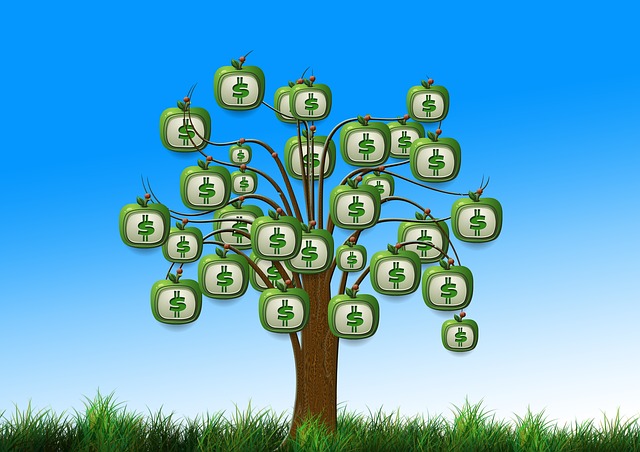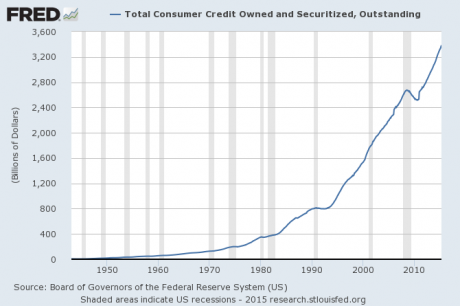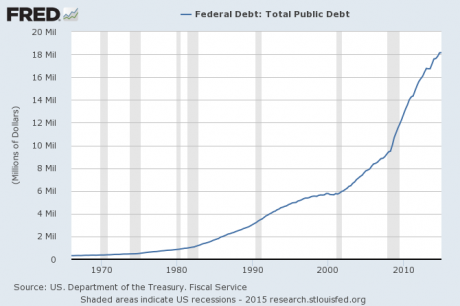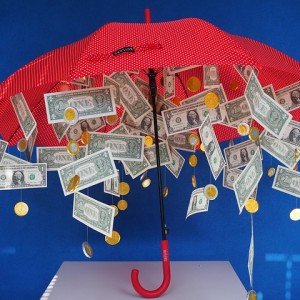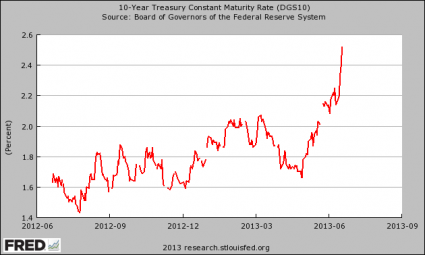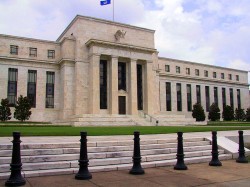 One of the most important steps that we could take to bring prosperity back to America would be to nationalize the Federal Reserve. Doing so would allow the federal government to quit borrowing money, dramatically reduce taxes and eventually pay off the entire U.S. national debt. Instead of inheriting the largest debt in the history of the world, future generations would actually have a chance at economic prosperity because they would not be forced to pay off the horrific debt of previous generations. The Federal Reserve is a perpetual debt machine, it has almost completely destroyed the value of the U.S. dollar and it has an absolutely nightmarish track record of incompetence. There are no good reasons to keep the status quo. Our current debt-based monetary system will inevitably lead to a complete and total economic collapse. We desperately need to make a change while we still can. As you will see below, there are a ton of good reasons why we should nationalize the Federal Reserve.
One of the most important steps that we could take to bring prosperity back to America would be to nationalize the Federal Reserve. Doing so would allow the federal government to quit borrowing money, dramatically reduce taxes and eventually pay off the entire U.S. national debt. Instead of inheriting the largest debt in the history of the world, future generations would actually have a chance at economic prosperity because they would not be forced to pay off the horrific debt of previous generations. The Federal Reserve is a perpetual debt machine, it has almost completely destroyed the value of the U.S. dollar and it has an absolutely nightmarish track record of incompetence. There are no good reasons to keep the status quo. Our current debt-based monetary system will inevitably lead to a complete and total economic collapse. We desperately need to make a change while we still can. As you will see below, there are a ton of good reasons why we should nationalize the Federal Reserve.
Right now, most Americans believe that the Federal Reserve is actually an agency of the federal government. But that is simply not the case. The truth is that the Federal Reserve is about as “federal” as Federal Express is.
The Federal Reserve openly admits as much. For example, in defending itself against a Bloomberg request for information under the Freedom of Information Act, the Federal Reserve stated in court that it was “not an agency” of the U.S. government and therefore not subject to the Freedom of Information Act.
So who owns the Federal Reserve?
As the Federal Reserve’s own website describes, it is the member banks that own it….
The twelve regional Federal Reserve Banks, which were established by Congress as the operating arms of the nation’s central banking system, are organized much like private corporations–possibly leading to some confusion about “ownership.” For example, the Reserve Banks issue shares of stock to member banks. However, owning Reserve Bank stock is quite different from owning stock in a private company. The Reserve Banks are not operated for profit, and ownership of a certain amount of stock is, by law, a condition of membership in the System. The stock may not be sold, traded, or pledged as security for a loan; dividends are, by law, 6 percent per year.
The debt-based monetary system established by the Federal Reserve has greatly enriched the big banks and the people that own them. This has been at the expense of the American people.
A private central bank should not issue our currency, set interest rates and run our economy. Rather, we need to return control over the currency to the American people where it belongs.
The following are 14 reasons why we should nationalize the Federal Reserve….
#1 The U.S. Constitution says that the federal government is the one that should be issuing our money.
In particular, according to Article I, Section 8 of the U.S. Constitution, it is the U.S. Congress that has been given the responsibility to “coin Money, regulate the Value thereof, and of foreign Coin, and fix the Standard of Weights and Measures”.
#2 Our current debt-based monetary system is a perpetual debt machine. It is absolutely imperative that we nationalize the Federal Reserve and begin to issue debt-free money.
In a previous article about money and debt, I explained how more government debt is created whenever the U.S. government puts more money into circulation….
When the government wants more money, the U.S. government swaps U.S. Treasury bonds for “Federal Reserve notes”, thus creating more government debt. Usually the money isn’t even printed up – most of the time it is just electronically credited to the government. The Federal Reserve creates these “Federal Reserve notes” out of thin air. These Federal Reserve notes are backed by nothing and have no intrinsic value of their own.
This process creates a huge problem. When each new dollar is created, the interest owed by the federal government on that new dollar is not also created at the same time.
Therefore, more debt is actually created than the amount of money that the federal government receives from the Federal Reserve.
This is a Ponzi scheme that is designed to drain wealth from the American people and transfer it to the banking system.
This is why I call the Federal Reserve system a perpetual debt machine. Today, the U.S. national debt is more than 5,000 times larger than it was 100 years ago.
Back in 1910, prior to the passage of the Federal Reserve Act, the national debt was only about $2.6 billion.
By going to a system of debt-free money, the U.S. government would never have to borrow a single dollar ever again.
#3 Our current debt-based monetary system requires very high personal income taxes to pay for it. It is no accident that the personal income tax was introduced at about the same time that the Federal Reserve system came into existence.
If we nationalized the Federal Reserve and capped federal government spending at a reasonable percentage of GDP, it would be entirely possible to massively cut taxes and still keep our promises regarding Social Security and other important social programs at the same time.
I believe that eventually the entire personal income tax system could be completely wiped out and the IRS could be totally shut down. This would save our economy billions upon billions of dollars in income tax compliance costs.
However, as an initial first step, I believe that we should eliminate all payroll taxes, all “self-employment taxes” and all taxes on the first $100,000 earned by every American.
This would provide much needed relief to the millions of poor and middle income families that have been hurt so badly by this economic downturn.
Also, I believe that we could instantly reduce the corporate tax rate to levels that would be competitive with the rest of the world, while closing corporate tax loopholes at the same time. This would remove the temptation for companies to leave the United States in order to escape our brutally high corporate tax rates.
Yes, the proposals above would definitely cut taxes.
So where would we make up the difference?
Well, the U.S. Constitution provides one clue. According to Article I, Section 8 of the U.S. Constitution, the U.S. Congress has the right to impose “duties, imposts and excises” on goods sold in this country.
For way too long, big corporations have been taking advantage of sweatshops in the third world. For way too long, other nations have used predatory trade practices to take unfair advantage of us. For way too long, we have allowed nations with horrific human rights records to ship their goods into our country for free.
Well, we need to bring that to an end. By raising tariffs we would raise money for the federal government and we could potentially start to reverse the flow of jobs and businesses that have been leaving this country.
Access to the U.S. market is a privilege, not a right. High tariffs would be imposed on goods from any country that allows slave labor wages to be paid. Very high tariffs would be imposed on goods from any country that is using predatory trade practices against us. Extremely high tariffs would be imposed on any nation that does not respect basic human rights.
However, please keep in mind that none of this would work if we did not nationalize the Federal Reserve. The tax cuts proposed above would be suicidal under our current debt-based monetary system. But if we nationalize the Fed, we really could do this. It may sound crazy, but it really would work.
#4 If we nationalize the Federal Reserve, there would be no more budget deficits. If the federal government was a bit short one year, it would just print up a little bit of extra money in order to make up the difference.
It would also be very important to cap federal government spending as a percentage of GDP so that we don’t have crazy Congress critters creating a lot of inflation by spending us into oblivion.
Just because we would be adopting a debt-free monetary system does not mean that we could throw spending discipline out the window. Rather, it would actually become more important than ever.
#5 If we nationalize the Federal Reserve, we would instantly reduce the national debt by 1.6 trillion dollars. That is the amount that is currently on the balance sheet of the Federal Reserve. The Federal Reserve just created this money out of thin air anyway, so it was never their money to begin with. Some members of Congress have already proposed cancelling the debt held by the Federal Reserve, and it is a great idea.
#6 If we nationalize the Federal Reserve, we could eventually get rid of the entire national debt.
Under our current system, the U.S. national debt will never, ever be paid off. We are 15 trillion dollars in debt, and at this point we add more than a trillion dollars to that number every year.
As I have written about previously, if the federal government began right at this moment to repay the U.S. national debt at a rate of one dollar per second, it would take over 440,000 years to pay off the national debt.
But under our current system we are not paying it off. Rather we keep piling up more debt at an astounding pace.
In a system of debt-free money, there would be no more budget deficits, and we could actually start slowly paying off the national debt with newly issued “United States money”.
This would have to be done very slowly so as to not shock the financial system, but it could be done. As U.S. debt becomes due, a small percentage of it could be retired each year.
It is entirely conceivable that within 30 to 40 years we could pay it off entirely without causing tremendous damage to the financial system.
#7 If we nationalize the Federal Reserve, we will eventually totally eliminate the interest on the national debt. Most Americans don’t understand this, but each year we spend hundreds of billions of dollars just on interest on the national debt. For example, the U.S. government spent over 454 billion dollars on interest on the national debt during fiscal year 2011.
Under a debt-free monetary system, that number would eventually go to zero. That would save the federal government a ton of money.
#8 While there is certainly a danger that we would have inflation under a debt-free monetary system, the reality is that we are absolutely guaranteed inflation under the Federal Reserve system.
Most Americans believe that inflation is a fact of life, but the sad truth is that the United States has only had a major, ongoing problem with inflation since the Federal Reserve was created back in 1913.
If you do not believe this, just check out this chart.
Sadly, the U.S. dollar has lost well over 95 percent of its value since the Federal Reserve was created.
So, yes, there would be a need for monetary discipline under a debt-free monetary system, but it would be hard to do worse than the Federal Reserve has already been doing.
#9 If we nationalize the Federal Reserve, we would eliminate all of the financial bubbles that the Federal Reserve has been creating.
For example, there would not have been such a bad housing crash if the Federal Reserve had not created such perfect conditions for a housing bubble in the first place.
We should eliminate the Federal Reserve and allow the market to set interest rates. Having a central authority that sets interest rates is just simply wrong and it creates all sorts of problems.
#10 The Federal Reserve has not been doing a good job.
In case anyone has not noticed, Federal Reserve Chairman Ben Bernanke has a very long track record of incompetence. Nearly every major judgment that he has made since taking over that position has been dead wrong.
We are always told that we need someone to run the economy and that the Fed is there to keep depressions from happening.
Well, the truth is that the Fed actually greatly contributed to the Great Depression and it was at least partly responsible for the financial crash of 2008.
Now we are right on the verge of yet another massive financial implosion.
If someone keeps wrecking your car, you don’t let them keep driving it, do you?
#11 If we nationalize the Federal Reserve, we could potentially transition to “sound money” at some point.
There is great debate about this of course. But it is a debate that we need to have.
But before we go to “hard money” we need to do something about this horrific debt that we have piled up for future generations first. We simply cannot lock this debt in and expect them to pay for our mistakes.
We made this mess, so we need to clean it up.
Going to a debt-free monetary system would allow us to do that.
#12 If we nationalize the Federal Reserve, our local banks will have much more freedom. Most Americans simply do not understand just how much power the Federal Reserve actually has over our local banks.
For example, just last year Federal Reserve officials walked into one bank in Oklahoma and demanded that they take down all the Bible verses and all the Christmas buttons that the bank had been displaying.
#13 If we nationalize the Federal Reserve, we won’t have trillions of dollars of secret loans being made to big financial institutions on Wall Street and in foreign countries.
Most Americans don’t realize this, but the Federal Reserve made $16.1 trillion in secret loans to their friends during the last financial crisis.
Meanwhile, hundreds of small banks were left out in the cold and the American people got no help.
This is rampant corruption and it needs to be stopped.
#14 The Federal Reserve needs to be nationalized because it is an unelected, unaccountable “fourth branch of government” that has gotten completely and totally out of control. Even some members of Congress are now openly complaining about how much power the Fed has. For example, Ron Paul told MSNBC last year that he believes that the Federal Reserve is now more powerful than Congress…..
“The regulations should be on the Federal Reserve. We should have transparency of the Federal Reserve. They can create trillions of dollars to bail out their friends, and we don’t even have any transparency of this. They’re more powerful than the Congress.”
To learn much more about the Federal Reserve and how it is destroying prosperity in America, there is a great animated documentary on YouTube entitled “The American Dream” that you can watch right here.
It is absolutely imperative that the American people get educated about the Federal Reserve and about why a debt-based monetary system is bad for us.
In 1922, Henry Ford wrote the following….
“The people must be helped to think naturally about money. They must be told what it is, and what makes it money, and what are the possible tricks of the present system which put nations and peoples under control of the few.”
The U.S. government does not need to go into debt to anyone.
The U.S. government is a sovereign nation.
So why in the world are we 15 trillion dollars in debt?
We have allowed ourselves to become willingly enslaved.
In the book of Proverbs, it tells us the following….
The rich ruleth over the poor, and the borrower is servant to the lender.
By allowing ourselves to become enslaved to debt, we have become the servants of the international banking system.
Our founding fathers attempted to warn us about this.
For example, Thomas Jefferson strongly believed that when the federal government borrows money in one generation which must be paid back by future generations it is equivalent to stealing….
And I sincerely believe, with you, that banking establishments are more dangerous than standing armies; and that the principle of spending money to be paid by posterity, under the name of funding, is but swindling futurity on a large scale.
Not only that, Thomas Jefferson also once stated that if he could add just one more amendment to the U.S. Constitution it would be a ban on all government borrowing….
I wish it were possible to obtain a single amendment to our Constitution. I would be willing to depend on that alone for the reduction of the administration of our government to the genuine principles of its Constitution; I mean an additional article, taking from the federal government the power of borrowing.
If we had implemented that advice, how much better off would we be today?
We can still do this.
We can take back control of our financial system.
We can nationalize the Federal Reserve.
We can dramatically cut taxes and eventually shut down the IRS.
We can give our children and grandchildren a future that is debt free.
We can escape the tyranny of the international bankers.
The choice, America, is up to you.
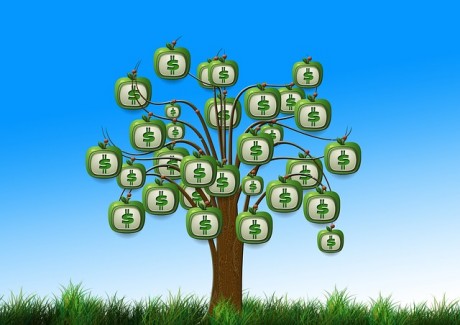 Corporations, individuals and the federal government continue to rack up debt at a rate that is far faster than the overall rate of economic growth. We are literally drowning in red ink from sea to shining sea, and yet we just can’t help ourselves. Consumer credit has doubled since the year 2000. Student loan debt has doubled over the course of the past decade. Business debt has doubled since 2006. And of course the debt of the federal government has doubled since 2007. Anyone that believes that this is “sustainable” in any way, shape or form is crazy. We have accumulated the greatest mountain of debt that the world has ever seen, and yet despite all of the warnings we just continue to race forward into financial oblivion. There is no possible way that this is going to end well.
Corporations, individuals and the federal government continue to rack up debt at a rate that is far faster than the overall rate of economic growth. We are literally drowning in red ink from sea to shining sea, and yet we just can’t help ourselves. Consumer credit has doubled since the year 2000. Student loan debt has doubled over the course of the past decade. Business debt has doubled since 2006. And of course the debt of the federal government has doubled since 2007. Anyone that believes that this is “sustainable” in any way, shape or form is crazy. We have accumulated the greatest mountain of debt that the world has ever seen, and yet despite all of the warnings we just continue to race forward into financial oblivion. There is no possible way that this is going to end well.